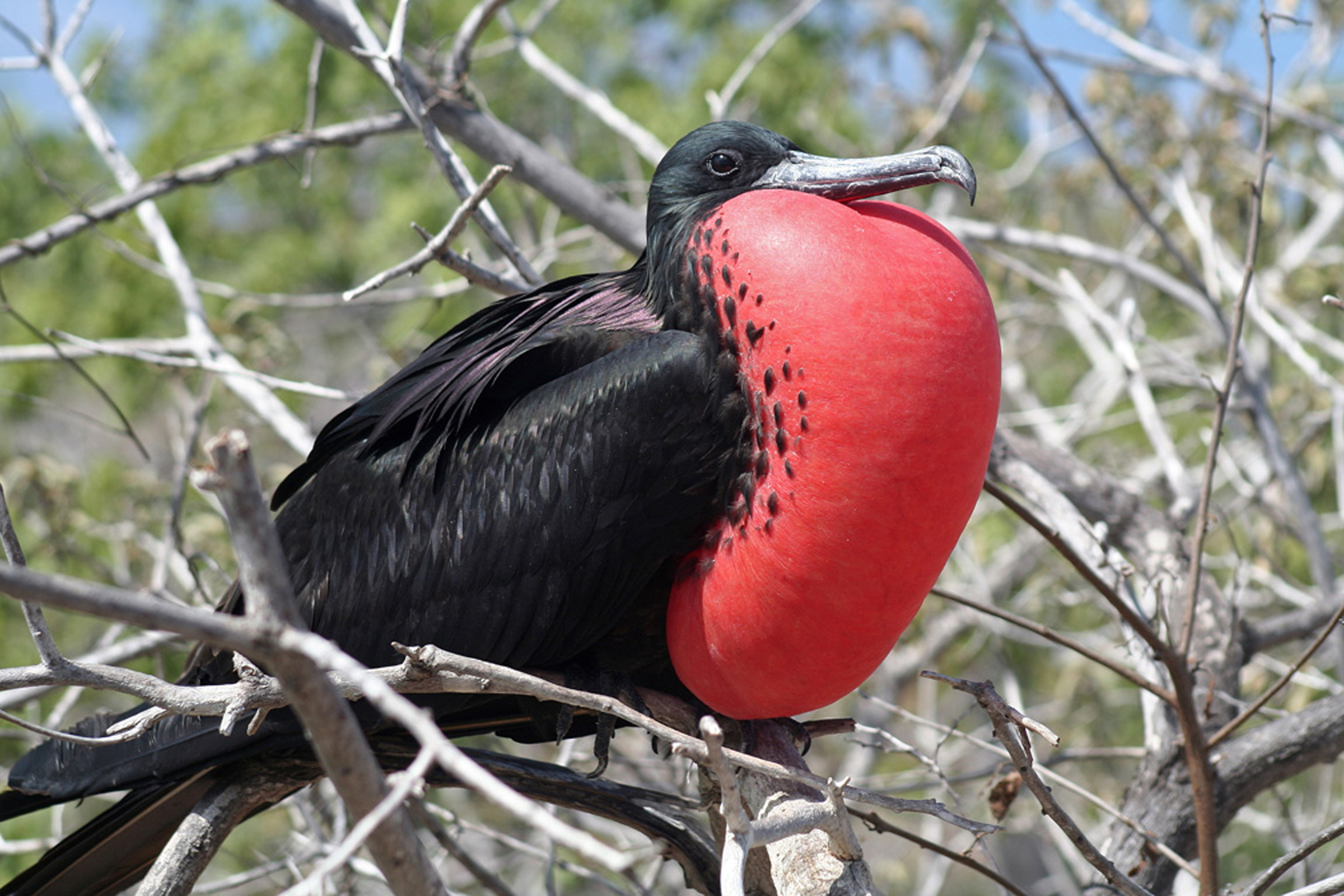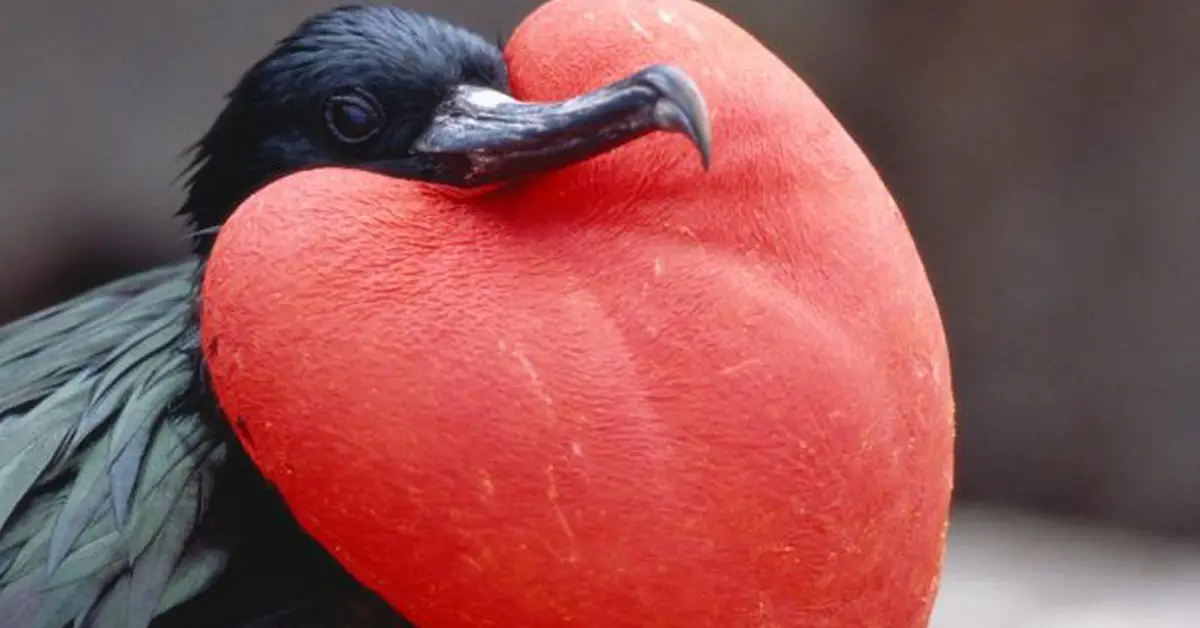It seems that not only humans are celebrating Valentine’s Day, but animals too, frigatebirds in particularly. These magnificent males have a unique way to attract their mates. A red inflatable throat pouch what looks exactly like a giant heart.
Native on Hawaii and Galapagos island, these birds are not better than other birds. They feed with fish and jellyfish. But but they can’t take rest breaks on the water because, unlike most seabirds, their feathers are not waterproof. So, to avoid the need for breaks, they use thermals to soar and glide, rising to heights of up to 8000 feet. But what makes this bird species really special is the breeding season.

The proud male frigatebirds have a truly unique way of attracting the females, a red, inflatable throat pouch, which looks a little bit like a giant red heart.
Males have these crazy ornaments, for which they are famous,” says Dr. Donald Dearborn, professor of biology at Bates College. “Lots of birds have colorful ornaments, which can be colored feathers or unfeathered, exposed patches of colored skin, but the inflatable aspect of the frigate throat is unusual.”
So this pouch is connected to the respiratory system and when the male tries to find a new partner, it inflate like 15 to 30 minutes.
During this process, the pouch has two possible functions, according to Dearborn. First, it is a strong visual signal to the females above — kind of like pointing a giant Valentine’s day card into the sky. Second, it could serve as a resonator for his courtship calls because, he says, “some data suggest that it resonates or amplifies the bill-rattling noise that they make, and that larger throat pouches do this in a way that is more attractive to females.”

The bright red color is created by hemoglobin and carotenoid pigments. “To incorporate carotenoids into the red feathers of a cardinal or the red throat pouch of a frigatebird, that bird has to eat carotenoid-containing plants or eat animals that ate such plants,” Dearborn explains. “In the case of frigatebirds, we suspect that the carotenoids are obtained by eating certain kinds of squid.”
However, it’s unclear what exactly makes a female pick a certain male, at least in the Hawaii population that Dearborn studied. “We’ve looked at throat pouch size, color and damage; body size, symmetry and damage to wing or tail feathers; [and] size and shininess of the iridescent feathers around their neck,” he said.
“She lands beside a particular mate… [and] decides whether he is ‘the one,’” Dearborn explains. “This could happen within a minute or two, or after an hour or more. It’s unclear why it takes a variable amount of time,” he continues. “If she rejects him, she leaves and resumes flying around and the process starts over. If she accepts [him], she stays with him, and they sit together for maybe a day.”
Watch these birds and their incredible behavior in the video bellow!
h/t: geek

